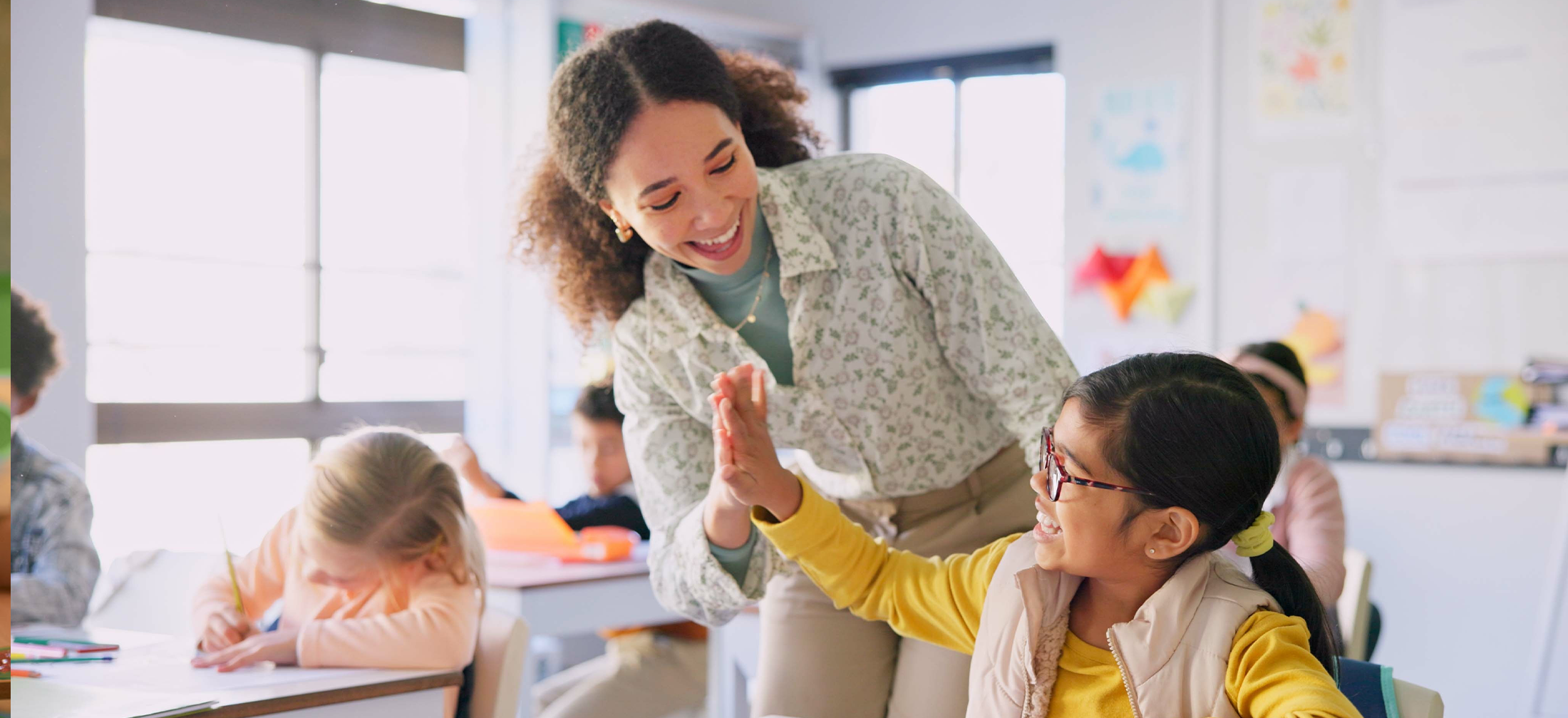
As the research librarian for Marzano Research, I monitor the latest news and research on topics that are important to our stakeholders and staff. As you might imagine, the ramifications of the COVID-19 pandemic—and potential solutions to the problems it has created—have been a major theme across all areas of education in recent months.
This holds true in school improvement. Hot topics in this area include learning loss, unfinished teaching and learning, social-emotional learning, trauma-informed teaching, and student engagement in relation to students’ return to school.
Bedrock topics such as student outcomes and achievement, meanwhile, are being approached through the lens of learning disruptions since the start of the pandemic in March 2020. This topical review paints a picture of a field in which educators are working to adapt and find solutions to address pandemic-related needs while striving to embrace trauma-informed teaching.
“Learning loss” has been used to describe the anticipated gap in academic knowledge and skills that students would experience due to the abrupt closure of schools and move to virtual learning. However, there is an increasing shift to describe what happened more accurately as “unfinished learning” (and in some cases, “unfinished teaching”) instead of learning loss. In this blog post, we use unfinished learning or unfinished teaching and learning to describe the work that needs to be done together to address post-pandemic learning gaps.
The common theme across all threads of school improvement is the need to properly assess and address unfinished teaching and learning at all grade levels, as distance education has been the norm nationwide throughout 2020 and into 2021. As the education community pulls together to fight this worrisome trend, educators and education leaders from all types of schools and districts are coming together to provide leadership and produce valuable resources.
State Plans, Research, and Policy Scans
The 74 provides a good rundown of the different approaches states are considering in response to unfinished learning. These approaches include extended learning time (adding time to extend the school day and extend the school year), comprehensive summer school, and retention of students that allows to repeat their current grade.
Additionally, the Council of Chief State School Officers and National Governors Association have released State Plans for Accelerating Student Learning: A Preliminary Analysis, a memo that describes key state initiatives and plans and provides a national overview.
This research brief from i-Ready confirms that “unfinished learning is greater for students in schools serving a majority of Black and Latino students, compared to most White students, and unfinished learning is most stark for students underprepared to access grade-level work. Students attending schools in lower-income zip codes are also experiencing greater unfinished learning than students attending schools in higher-income zip codes” (p. ii). The brief also states that students in grades 1–7 are experiencing greater gaps in reading.
And, in The Economic Impacts of Learning Losses, Eric A. Hanushek and Ludger Woessmann present and analyze the possible long-term impact of pandemic-related unfinished learning on students’ economic future.
Unfinished Teaching and Learning in the Classroom and During the Summer
As the COVID-19 pandemic disrupts assessment and teaching norms, educators and researchers are taking action to address student learning and achievement gaps. For example, educators at the Missouri Department of Elementary and Secondary Education have assembled the Task Force for Learning Acceleration to address pandemic-related unfinished learning. Focusing on identifying achievement gaps, addressing personal trauma, and accelerating learning, the task force has provided resources and training to guide educators to be flexible and forgiving ways for all involved.
The Thomas B. Fordham Institute has developed The Acceleration Imperative, an open-source, evidence-based document that collects and shares resources from a variety of education experts. The document addresses a range of relevant topics, such as positive school culture, professional learning, and family engagement. Recommendations for family engagement focus on rebuilding lapsed relationships between school personnel and caregivers and on transparent and accessible communication.
Meanwhile, there is keen interest in the potential positive impact of tutoring. According to the Hechinger Report, research demonstrates that “high-dosage” (or frequent, intensive, and ongoing) tutoring is an effective approach to addressing unfinished learning, particularly for elementary students.
The U.S. Department of Education also announced the Summer Learning and Enrichment Collaborative, a “professional learning community that brings together relevant stakeholders to help states use more than $1.2 billion of the American Rescue Plan . . . funding to build evidence-based summer programs that address the lost instructional and extracurricular time students may have experienced as a result of the pandemic, especially underserved students and those disproportionately affected by the COVID-19 pandemic.”
Student Engagement, Social-Emotional Learning, and Trauma-Informed Teaching
While unfinished teaching and learning has dominated the discourse in a school year challenged by the COVID-19 pandemic, student engagement, social-emotional learning, and trauma-informed teaching are topics with legs, where real work is being accomplished. For example, student engagement is a current emphasis in Nebraska. Education leaders there are addressing chronic absenteeism and truancy by adapting and creating policies that focus on engagement and connection to meet the needs of the community and schools.”
Meanwhile, teachers in Aurora, Colorado, received eight days of special training in social-emotional learning, with a focus on creating relationships and connecting with their students in a virtual environment. The strategic start to the school year also allowed students and staff to work out the technical kinks and get comfortable with the virtual environment before active learning began.
Finally, a valuable resource on trauma-informed teaching has emerged during this trying time. A Trauma-Informed Approach to Teaching Through Coronavirus from Learning for Justice covers elements of trauma-informed teaching, such as creating a sense of safety, fostering connections, and encouraging hope.
For more reading and research on the response to the COVID-19 pandemic, you can find additional resources on our COVID-19 page and on the REL Central website.



